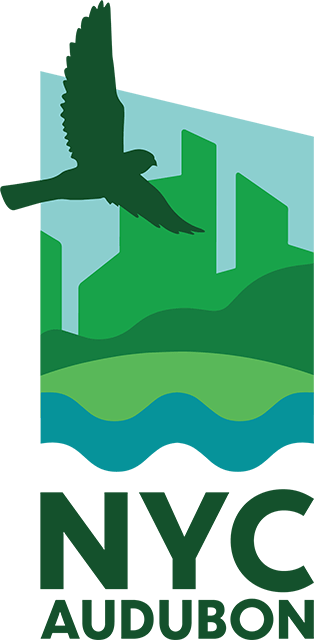How Can Weather Forecasts Help Us Save Birds?
category: CONSERVATIONGENERALURBAN AUDUBON
.png)
An infographic, with a dead White-throated Sparrow at the right, explains the weather conditions that increase collision risk in New York City during the fall and spring seasons. Graphic: Sara Kross, PhD, with photo from Katherine Chen.
How Can Weather forecasts help us save birds?
This article appears in the spring 2024 issue of The Urban Audubon.
Sara Kross, PhD, Katherine Chen (NYC Audubon Community Science and Outreach Manager), and Benjamin Van Doren, PhD | March 6, 2024
Migration is a particularly dangerous journey, and it’s estimated that collisions with windows kill up to one billion birds across North America annually. NYC Audubon scientists and partners have focused on this problem for decades. Now, new research on weather’s impact can make solutions more effective.
Every year, billions of birds migrate from their breeding grounds to their overwintering sites and back again. During this journey, NYC Audubon estimates that nearly a quarter million birds die from injuries caused by window collisions in the City each year. The causes? Glass and light.
A key action to decrease bird collisions is turning off unnecessary night-time lighting and reducing New York City’s light pollution, which draws migratory birds into the City, disorienting them and making them more susceptible to collisions with windows.
Across the continent, “Lights Out” programs encourage building owners and tenants to turn off unnecessary lights during migration. However, these programs are largely voluntary, and for many large buildings, a season-long Lights Out program (in New York City, April 1–May 31 in spring; August 15–November 15 in fall) has been a barrier to full participation.
In 2021, we—scientists from NYC Audubon, Columbia University, the University of Canterbury, American Bird Conservancy, Great Hollow Nature Preserve & Ecological Research Center, the Cornell Lab of Ornithology, and the University of Illinois at Urbana-Champaign—set out to remove this barrier. Our goal was to better understand collision risk factors and hone in on the most dangerous nights for birds in order to facilitate more effective calls for Lights Out participation.
Radar technology, like the Cornell Lab of Ornithology BirdCast tool (pictured below), allows us to better predict nights that are likely to be problematic for bird collisions based on the number of migrating birds. Sometimes, however, nights that were predicted to be especially risky for bird collisions were below average, and nights that supposedly didn’t pose a threat turned into major mortality events. We thought weather might explain this variation.
BirdCast uses radar technology to predict migration intensity on given nights, up to three days in advance. Combining this information with weather forecasts and historical collision data opens up new bird conservation opportunities.
Building on NYC Audubon’s Project Safe Flight—where volunteers monitor buildings across the City for collision victims—we incorporated local weather data to avian migration data to see if weather could be an important predictor of collisions. Our findings indicated that weather conditions combined with migration traffic patterns are important predictors of bird collision risk. Generally, bird collision rates were higher when there was more migration traffic, but they were also affected by unfavorable wind and visibility.
In spring, birds migrate north; therefore, headwinds blowing from the north are unfavorable. In fall, when birds fly south, winds coming from the south are unfavorable. In both seasons, winds from the west push migrating birds toward New York City and its bright lights and then further past the coast towards open water. These wind conditions, along with poor visibility at higher altitudes, lead birds to fly at lower heights where they are more susceptible to collide.
These results will allow organizations and individuals to tailor their Lights Out initiatives. While Lights Out throughout entire migration seasons is the ultimate goal, it’s not an easy ask of many buildings, especially large ones. If we can garner greater participation from buildings across the City (and country) on the nights that are likely to be most dangerous—when migration traffic is high and birds are likely to face headwinds or low clouds—we can begin reducing collisions immediately.
Visit nycaudubon.org/artificial-light to learn more about the dangers of light pollution to birds and how you can help prevent collisions.
Read the published research article here, from the Journal of Applied Ecology.
Read the published research article here, from the Journal of Applied Ecology.

.jpg)

